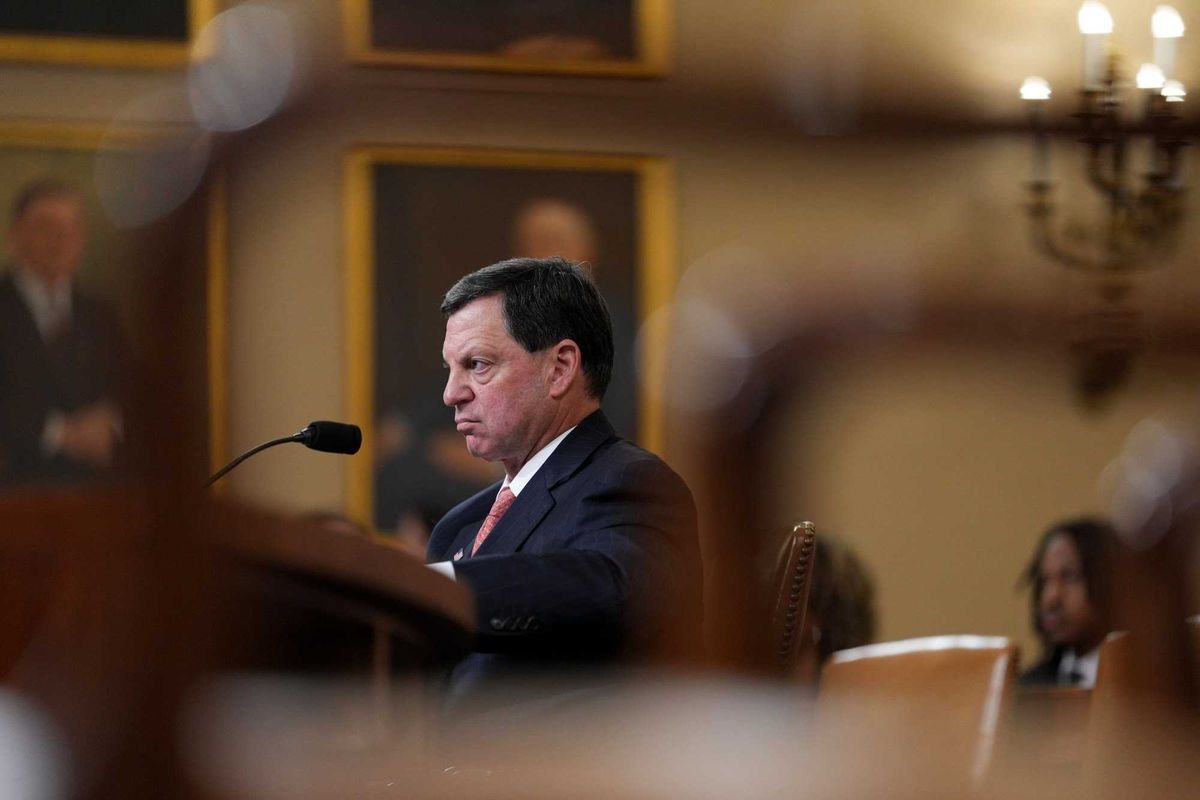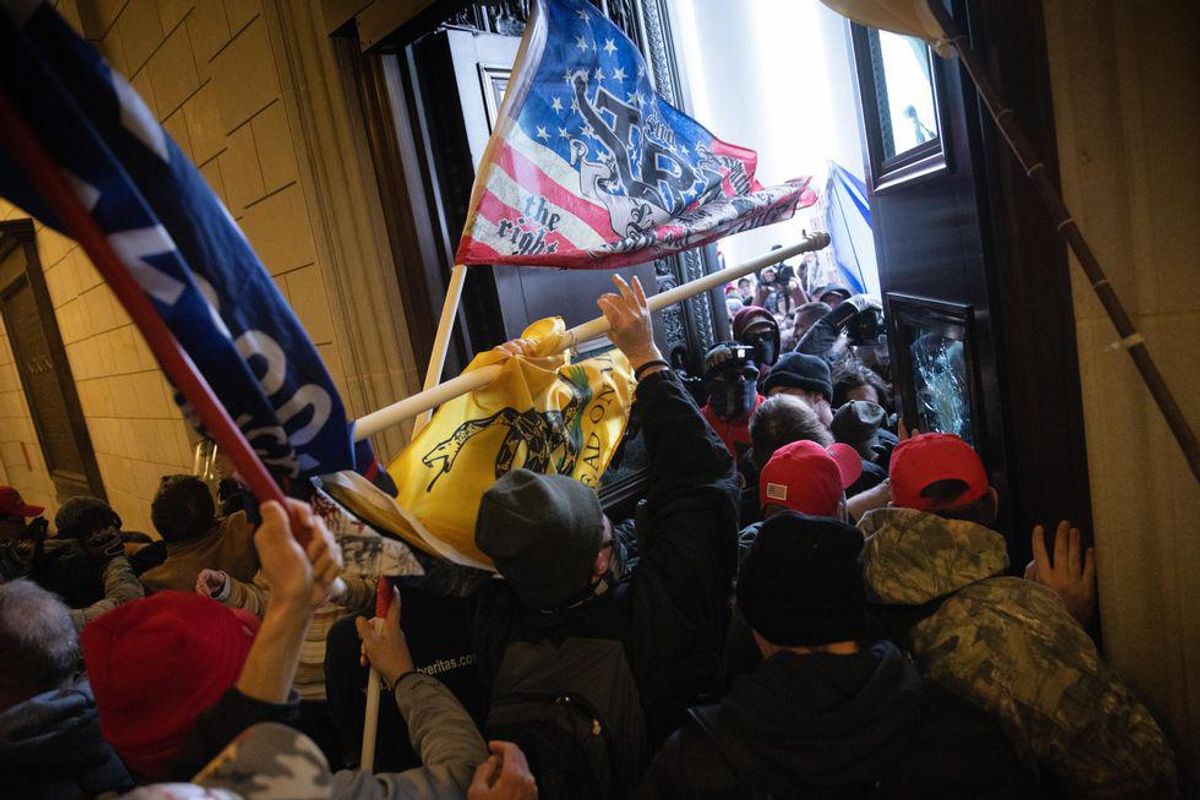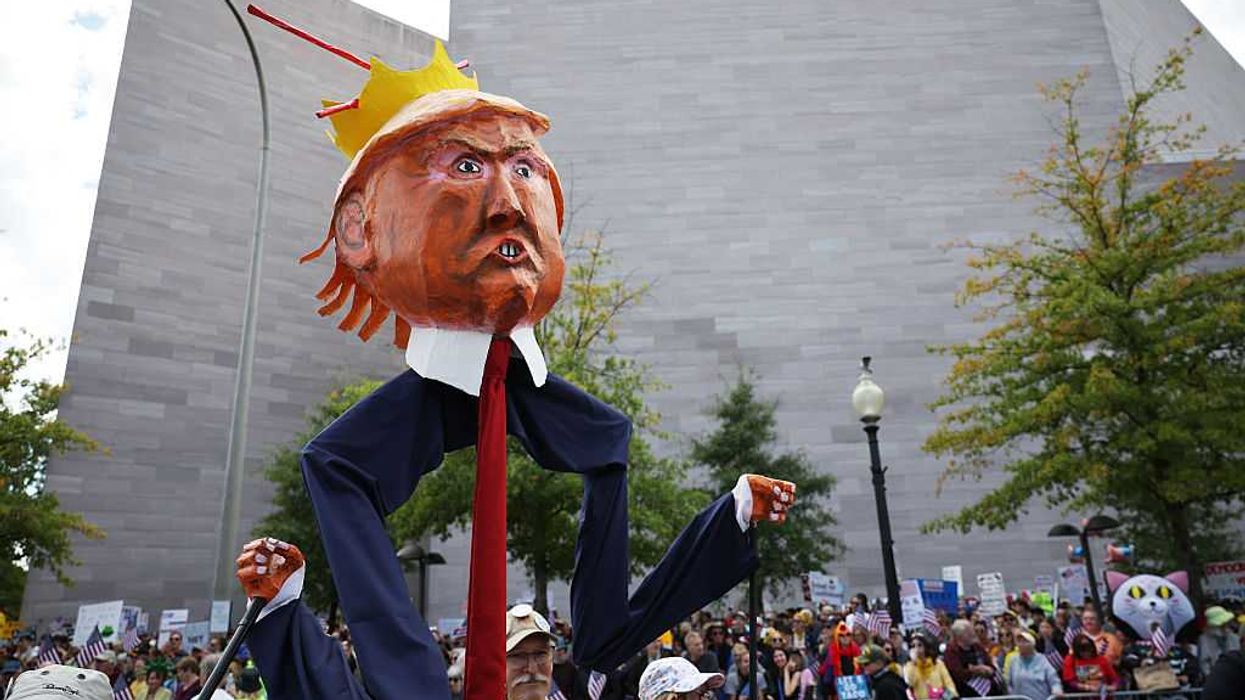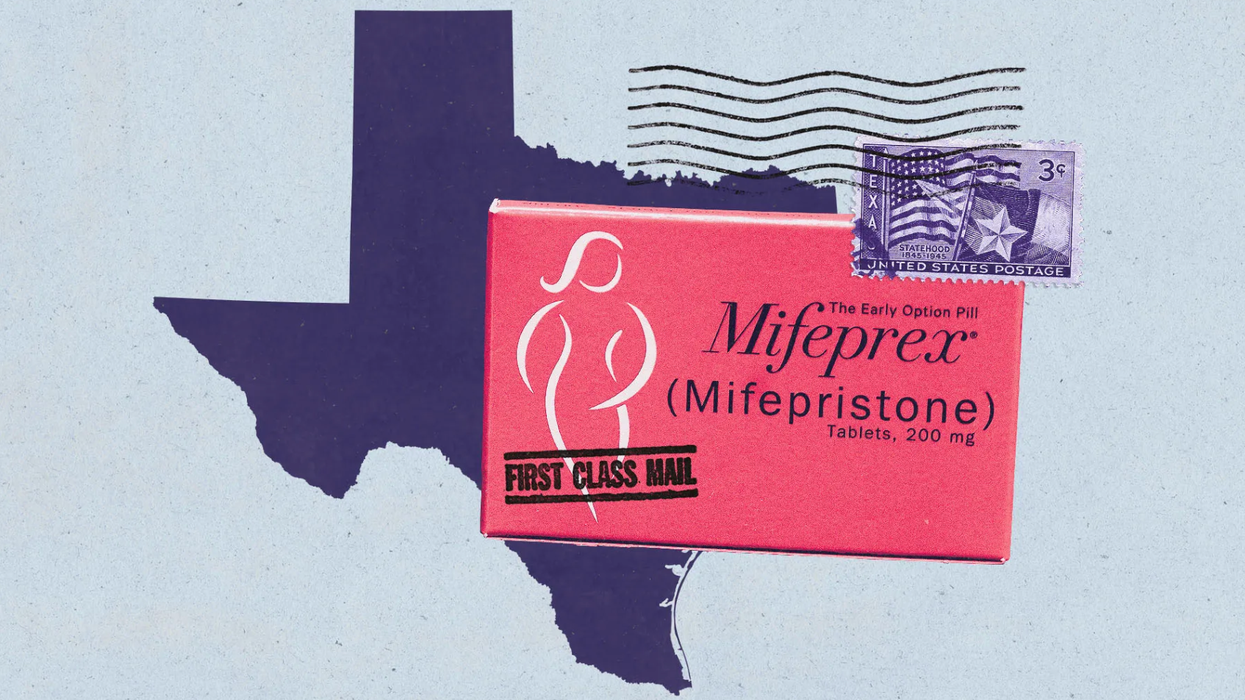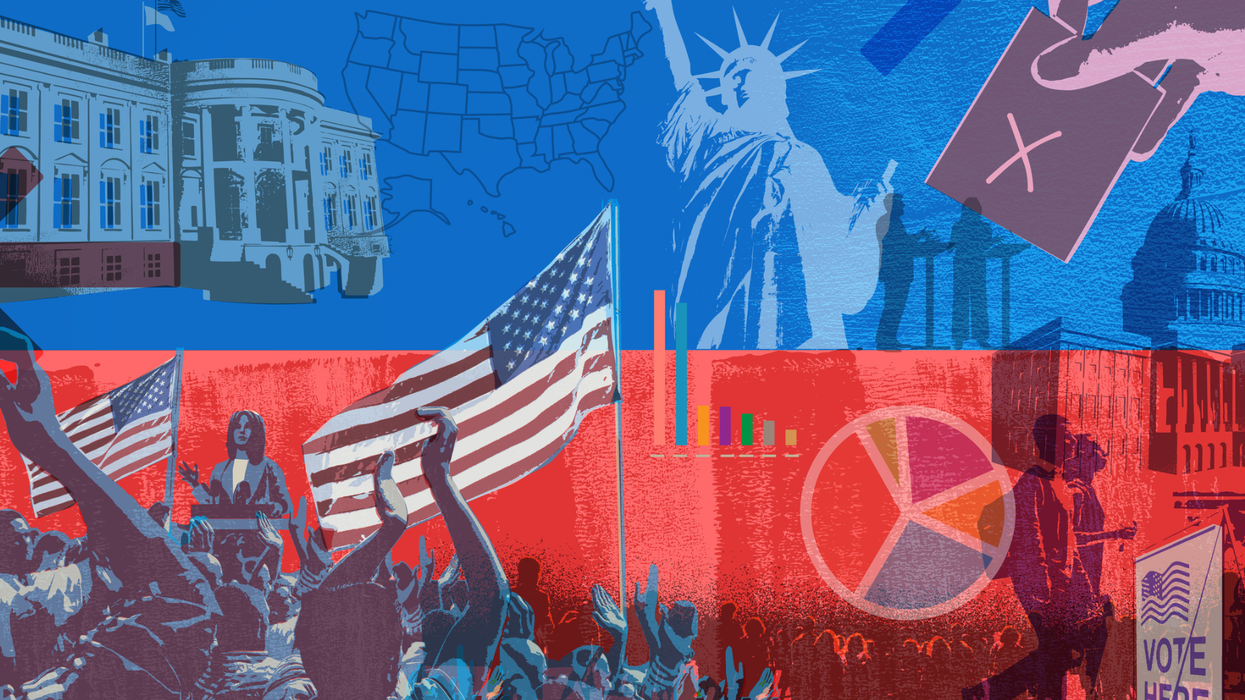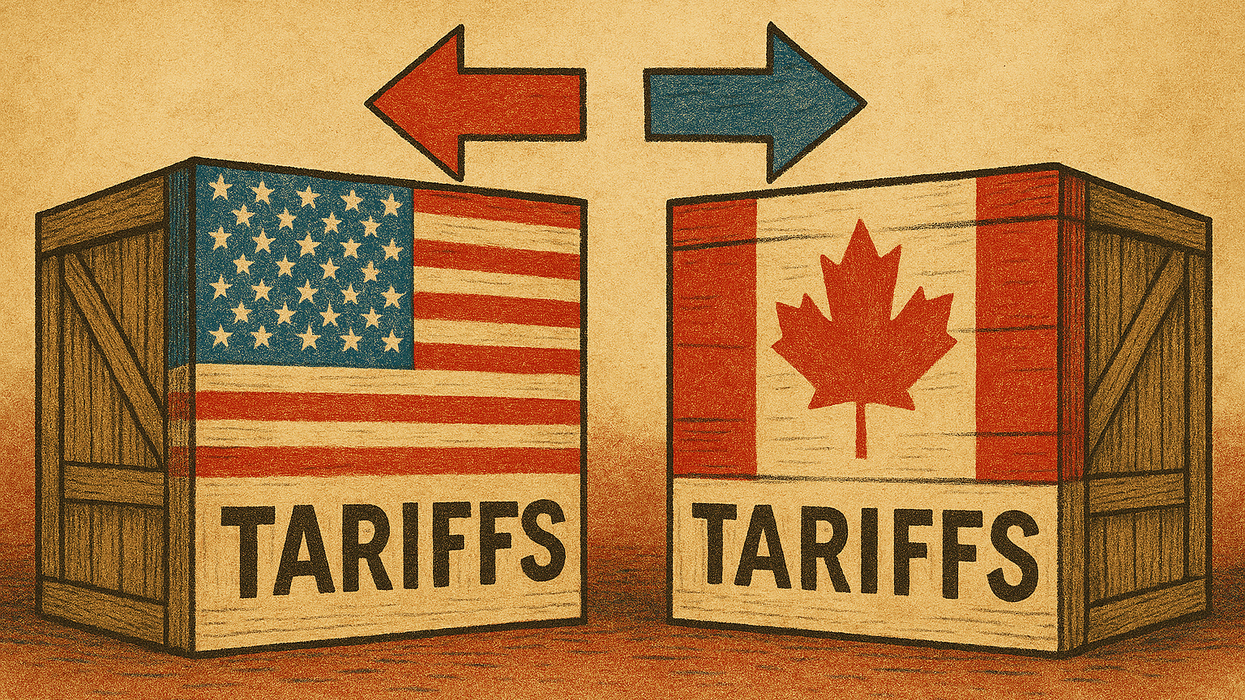Ask Big Questions is helping restore the soul of higher education. We provide powerful tools to engage diverse participants. Participants connect through reflective conversations. These conversations build trust and understanding in communities.
Site Navigation
Search
Latest Stories
Start your day right!
Get latest updates and insights delivered to your inbox.
Top Stories
Latest news
Read More
The Democracy for All Project
Dec 08, 2025
American democracy faces growing polarization and extremism, disinformation is sowing chaos and distrust of election results, and public discourse has become increasingly toxic. According to most rankings, America is no longer considered a full democracy. Many experts now believe American democracy is becoming more autocratic than democratic. What does the American public think of these developments? As Keith Melville and I have noted, existing research has little to say about the deeper causes of these trends and how they are experienced across partisan and cultural divides. The Democracy for All Project, a new partnership of the Kettering Foundation and Gallup Inc., is an annual survey and research initiative designed to address that gap by gaining a comprehensive understanding of how citizens are experiencing democracy and identifying opportunities to achieve a democracy that works for everyone.
A Nuanced Exploration of Democracy and Its Challenges
Beyond surface-level observations, a more nuanced exploration of democracy and its challenges is critical. Democracy has never worked fully for many groups in a nation founded on the enslavement of African Americans, the exclusion of women, and the conquest of Indigenous peoples. People’s dissatisfaction with democracy may have multiple, perhaps even contradictory, sources. Citizens today are worried about access to affordable housing and health care, the quality of education, and escalating prices for food, gas, and basic necessities. Some also believe institutions represent the wealthy and elites. At the same time, many of the most privileged believe that they are being discriminated against because of efforts to address historical inequalities.
As the challenges to American democracy have evolved, survey research must also grow and adapt. The depth of the divisions and discontent go beyond conventional explanations based on previous eras in our nation’s history. Are Americans hopelessly divided, or are there opportunities for common ground? How can institutions be improved to be more worthy of Americans’ trust? Surface-level questions will be insufficient to diagnose and reverse the dissatisfaction that has enabled this democratic backsliding.
Tying in Lived Experience
The starting point for the Democracy for All Project is the overwhelming evidence that many Americans perceive democracy is not working for them. For Americans to regain their faith in democracy, they must experience democracy positively in their communities and everyday lives. The research will introduce a novel approach to measuring democracy and will examine the deeper emotional and cultural drivers behind how people choose to engage with democracy today. How do ordinary Americans engage in 21st century democracy? What are the obstacles? How is democracy, or democratic backsliding, reflected in things they care about?
Values and Civic Identity
At the center of these trends is America’s future as a multiracial, pluralistic democracy. The US is projected to become majority-minority in 2045, and Gen Z is more diverse than preceding generations. Historically, diverse democracies have generally failed. The future of American democracy may depend on whether Americans can find common ground on core questions of national identity. Many of today’s most divisive issues hinge on attitudes toward various forms of diversity, including reckoning with America’s racial past, immigration, gender identity and LGBTQ+ rights, and whether America is or should be a Christian nation. What do Americans mean by “We, the People”? Do they see ethnic, racial, religious, and gender diversity as a national strength or a threat?
Elevating All Voices
To study these questions, today’s democracy demands robust data that reflect its growing diversity. A key goal of The Democracy for All Project is to elevate diverse voices while finding opportunities for common ground. The survey is committed to a best-in-class large sample size—20,000 adults—sufficient to account for the multi-dimensionality of people’s identities. The data will not be the same across groups or even within groups. Emerging research is showing that minority groups are not homogeneous, so differences within groups by gender, generation, nationality, education, and religion need to be fully understood. Within Gen Z, differences by gender are emerging. These trends can be understood only by including hard-to-reach populations with sufficient demographic resolution to study under-researched subpopulations.
A Commitment to the Long Term
Finally, the current crisis of American democracy has evolved over many years, and if democracy continues to decline, it will not fail overnight. To see how American democracy continues to evolve and respond, Kettering and Gallup are committed to annual surveys over an initial five-year period, with the flexibility to supplement core questions with specific items from year to year.
On November 20, Kettering and Gallup will release Is Democracy Working? the first of two reports on this year’s data. With a deeper understanding of what citizens want from their democracy, citizens, change-makers, and leaders can begin working together toward a shared vision in which everyone has a voice and feels valued.
Derek W. M. Barker is senior program officer for research initiatives at the Charles F. Kettering Foundation, a political theorist, and the lead editor of the foundation’s blog series From Many, We.
From Many, We is a Charles F. Kettering Foundation blog series that highlights the insights of thought leaders dedicated to the idea of inclusive democracy. Queries may be directed to fmw@kettering.org.
Keep ReadingShow less
Recommended

empty concrete road covered surrounded by tall tress with sun rays
Photo by JOHN TOWNER on Unsplash
A Bias toward the Vulnerability of Hope
Dec 07, 2025
In a Thanksgiving Day column in the New York Times, Lydia Polgreen wrote about her love of her father’s work across Africa to improve ordinary people’s lives. But Polgreen’s later work as a correspondent in Asia and Africa taught her “to be skeptical of her childhood convictions.
“I saw firsthand,” she continued, “how institutions of the kind my father worked for sometimes reinforced old hierarchies and systems of extraction and exploitation.”
Today, with wealthy nations slashing support for the poorest countries, she confessed that “the possibility of making strides against the grave problems bedeviling the world’s poorest people seems quite small indeed.”
But Polgreen also wrote eloquently against surrendering to despair. In a column after her father’s death, she observed:
“We live in a time dominated by pessimism and cynicism. These poses are a kind of armor against the vulnerability of hope. To be cynical is to close the door to the possibility of disappointment. To be pessimistic is to foreclose the risk of being made a fool by optimism.
"I realize now that the most precious thing my father gave me was an example of how to live a life devoid of cynicism and pessimism….”
It is an important reminder. How often do we slip into cynicism—individually or within the organizations we’re a part of—as a shield against the vulnerability of hope? How often do we let pessimism dictate the scale of what we dare ask of people?
Our first reaction might be: Not me. Not us. But a cheerful fundraising email cannot mask an organizational culture that keeps its members doing busywork instead of real civic engagement. Many nonprofits are afraid to make big asks of volunteers. Instead, they provide petitions and email form letters, the fleeting gestures of transactional advocacy.
Those online petitions and email form letters are electronic flickers that take nearly zero effort by the signer and have nearly zero effect on the recipient.
Sign, click, done—for us.
Receive, scan, delete—for the Congressional office.
Only 3 percent of Congressional staff say email form letters are highly effective with an undecided member of Congress. Three percent.
We can’t protest our way out of every crisis—though protests matter.
We can’t litigate our way out of our current predicament—though lawsuits matter.
We can’t vote our way out, when elections might be months or years away—though elections matter.
We need all of that—but we also need what we almost never name, transformational advocacy: Ordinary people building sustained, trusting relationships with the officials who make decisions in our name.
Transformational advocacy doesn’t start in Washington. It starts locally, with people forming chapters, learning together, and finding courage together.
Invite Americans to join a local advocacy group when there are endless shows to stream? Ask them to get trained to meet with a member of Congress when Wordle and other games beckon? It sounds unrealistic.
It isn’t.
But I know how hard it can be to get citizens off the couch. This year, I’ve been coaching the United Church of Christ Climate Hope Affiliates to launch their first 11 chapters. At a launch in October in Redding, California, the host had 12-15 yeses, but 18 attended and 13 joined the chapter. The new members would start with a four-part new group training session, held every week for four weeks.
On a call with organizing staff from four different organizations, I asked how many they thought would make it to the first training. They knew it was hard to get Americans off the couch two times in a row, so the guesses ranged from three to ten. It turns out that the attendance for the first three training sessions was 10, 12, and 12.
The organizer didn’t wear cynicism as armor.
The organizer had, as Polgreen wrote in her column, “a bias toward the vulnerability of hope.”
On leaving the Constitutional Convention in September 1787, Elizabeth Willing Powell asked Benjamin Franklin, "Well, Doctor, what have we got, a republic or a monarchy?"
Franklin replied, “A republic, if you can keep it.”
Those new advocates in Redding, and in groups like theirs across the country, are starting and sustaining the important work of keeping our republic, of keeping our democracy.
Sam Daley-Harris is the author of “Reclaiming Our Democracy: Every Citizen’s Guide to Transformational Advocacy” and the founder of RESULTS and Civic Courage. This is part of a series focused on better understanding transformational advocacy: citizens awakening to their power.
Keep ReadingShow less

empty curved road
Photo by Holden Baxter on Unsplash
America Is Not a Place, It’s an Epic Road Trip
Dec 07, 2025
Despite its size, Afghanistan has only a single highway running through it. It’s called National Highway 1, or Ring Road, and I spent a little time on it myself years ago. It has no major intersections, not really. Just 1,400 miles of dusty road that cuts through mountains and across minefields to connect small towns and ancient cities.
Over many decades, America helped build and rebuild Ring Road to support free trade and free movement throughout the country.
During Afghanistan’s 2009 presidential election—only its second since ratifying its new constitution—U.S. Army convoys drove on Ring Road carrying ballots cast by brave Afghans who had stood in line to vote while under threat from the Taliban for doing so. A threat so credible that they needed armed troops to protect them.
(Some people don’t know and could never imagine what it’s like to watch people try, and ultimately, fail, to vote themselves out from under tyranny. And it shows.)
When those on the side of liberal democracy left the country, Taliban thugs took full control of Ring Road, restricting travel on it almost exclusively to men who pay bribes. Women traveling just about anywhere are required by law to be chaperoned by a male relative.
It’s probably oversimplifying the matter, but it’s not totally untrue to say that when the Americans left in 2021, we took with us Afghanistan’s most practically and symbolically important open road.
That’s ironic, because the open road might be the most pervasive American idea.
From Lewis & Clark to the Underground Railroad, the Gold Rush, Kerouac, Route 66, the Great Migration, Ventura Highway, Thelma & Louise, Old Town Road, and a gazillion other examples, this idea of the open road permeates our history and our culture.
What could be more quintessentially American than striking out and, for better or worse, getting on with one’s journey?
If to be American is to be on an epic road trip, I think to govern America is to manage a big, messy intersection—the point where all our individual journeys inevitably, and necessarily, meet. Here’s what I mean: Think of the busiest, most complex intersection you’ve ever driven through. That intersection is our government in miniature. The intersection’s job is not to tell us where to go. Its job is to help us get to where we’re going without running each other over.
The literal intersection I think about is known in my city as “Five Points,” so named because it’s where five major multi-lane roads converge. Many cities have an intersection like this one. And to be honest, it’s almost always a bit of a mess.
Five Points is probably too big and complicated, and making a left turn through it at rush hour can feel pretty dicey. Still, most of the time, it basically works. When it’s working really well, we barely even notice it.
So what, exactly, makes this big messy intersection work?
First and probably foremost, there’s the rule of law. That’s the traffic signal and the cop who gives us a ticket when we run a red light. Driver’s ed. Traffic court.
The rule of law is necessary, but it’s grossly insufficient for making the intersection work.
There’s no explicit rule of the road, for example, dictating how to treat a fellow driver who accidentally pulls out too far making a left turn, and now they’re caught in the middle of the intersection when the light changes. Some will honk or flip the bird, and that’s their right. Most of us will wave the driver through to keep traffic flowing because even though we’re going to different places, we’re driving different cars, and we care about different things, we trust that we share a common goal.
We all want to get to where we’re going—safely and reliably.
To that shared end, most of us pay taxes, and those taxes help ensure the intersection is maintained and the green and red lights are timed correctly so we don’t worry too much about getting T-boned. That’s the social contract.
Taken together, the rule of law and the social contract make up a fairly free and liberal system that enables our journeys.
Five Points is not a perfect system, though. There are things we’d change about it.
I might prefer a roundabout to a traffic signal. You might think the “No right on red” sign is overbearing. We all hate potholes or roadwork that takes a lane out of commission and slows us down. So we advocate for the changes we want to see. We complain about the potholes. And we should.
But when you think just how complex this intersection is, it’s really a wonder that it works as well as it does, allowing so many cars to pass through it freely every day without incident. The same is true of our government.
Even so, sometimes the system fails.
Like when a storm takes out a traffic signal, and suddenly the intersection feels even more chaotic than usual. But while maintenance crews are en route, and we trust that they are, we drivers know what to do in the meantime. We behave as though we have stop signs. We make eye contact with other drivers and pay close attention to whose turn it is.
To get through the temporary crisis, we give each other grace, we remember our shared goal, and we work collectively toward it. That’s our civil society. Our fail-safe.
But our government only works when the people in charge of it are also committed to our goal—to get to where we’re going—and they uphold the rule of law, honor the social contract, and encourage civil society.
So what happens when our leaders don’t give a rip if we get to where we’re going because they believe having a common origin is more important than having a common goal? (A totally unoriginal idea asserted by just about every authoritarian ever.)
Let us imagine it.
Imagine what happens if a storm takes out a traffic signal, and instead of dispatching a maintenance crew, they send a wrecking ball (or a chainsaw)?
Imagine if they turned our public roadways into private tollways, dividing us into lanes and separating us from one another with concrete barriers.
Imagine if they replaced the traffic signals with big, gaudy, golden toll booths and charged an exorbitant fee. Not a tax that goes back into the system to make it work better, but a fee that goes into their pockets. A cost so high that most of us can’t afford it.
Imagine if they fired all the traffic cops, installed toll booth operators, armed them, and told them that we, the drivers, are the enemy.
Imagine if, more and more every day, the place where our journeys intersect weren’t well-regulated, but mobbed up.
Imagine if they told us they were going to do all that, and we elected them anyway.
Imagine there’s no more American liberal democracy. It’s easy if you try.
But of course, that’s just a thought experiment. Nothing like that could ever happen here because to be American is to take to the open road, free and unafraid to go your own way. Right?
The most epic road trip story I’ve ever heard was not a thought experiment and it was not an American story. It really happened, and it involved an Afghan friend who messaged me one day out of the blue.
Shabnam was a midwife and interpreter I’d worked with in Afghanistan. She was living in Europe now and wanted to do a video call and catch up.
Though we were older now, Shabnam looked younger than I’d remembered as she told me about her journey and what had inspired it. She said that after nearly a decade of waiting for the Special Immigrant Visa she’d been promised by the American government in return for her service, she’d grown too afraid of the constant Taliban threats to wait any longer. So she’d left her two young daughters with her sister in Kabul and human trafficked herself across Central Asia and Russia. Eventually, her daughters joined her in Europe.
On early morning video calls, Shabnam would coo over pictures of my toddler daughter. Her now-tween daughter joined our call one day, and she remembered me and called me “Sweetie”—a nickname she had first parroted back at me when she herself had been a toddler. I cried into my coffee.
A few years later, in the summer of 2021, Shabnam called me again, this time about a journey she hoped I could help her orchestrate. She was desperate to evacuate her sister, whose connection to Shabnam, a known American conspirator, put her at grave risk of Taliban vengeance killings now that it looked like Kabul would fall.
I tried, as many veterans did, and like most of us who tried, I failed. I failed to help her or anyone else I tried to help in those horrible days during the withdrawal and its aftermath.
I told Shabnam I was sorry for failing her. I was sad that after so many years since quashing al-Qaeda and after so much money and so much suffering, it seemed all we’d managed to do was line the pockets of so many defense contractors.
Shabnam saw things differently, though.
She told me, “Yes, for my whole life we have been at war, but for twenty years we saw it could be different, without Talib, without a woman walking only with a man in the street. With school. School for women.”
She told me those women would draw strength from that memory—the memory of walking freely to school on the open road—and that recollection would inspire them to fight their oppressors someday.
I choose to believe her and to hope, mostly because I don’t see the point in the alternative. But also because I was struck by the steadfastness of her voice as she asserted, so plainly, that such a small shadow of a memory of what freedom feels like would be enough to build upon.
I think about that conversation now, and I think of how in America, we are lousy with freedoms to build upon. Not faint memories to cling to, but real, robust freedoms that we enjoy and take for granted every day, right now.
What we lack is not collective memory, but collective imagination.
The founders drew some inspiration from history—right back to Cicero, even. But their real trick was not in what they were able to replicate from the past; it was in what they were able to conjure up for our future, out of thin air.
Shabnam’s hope for what the daughters of Afghanistan might imagine for themselves someday is a long shot, not unlike what our founders did in imagining American liberal democracy into existence in the first place.
In our current political moment, our task is much simpler.
First, we must let ourselves imagine what might happen if we really throw it all away.
Then, we must protect our liberal democracy by continuously reimagining it into being. Especially now. A more perfect union and all that.
Because when we prize nostalgia over imagination, we invite illiberalism. And when we venerate the past so much that we fail to imagine anything could ever be better than what came before, we don’t merely invite illiberalism—we pull up a chair for it and offer it a cup of tea.
The system is broken, yes. But I believe we can, and we must find common cause in fixing it. And I hope against hope we can muster the courage and creativity to imagine something better.
I choose to believe and to hope, mostly because I don’t see the point in the alternative. And also because the epic American road trip is not about remembering where we’ve been. It’s about imagining where we might go next.
Joanna Dasher is a former U.S. Army officer and West Point graduate who served in Afghanistan on a Provincial Reconstruction Team in Ghazni Province. She writes and works from Atlanta, Georgia.
Keep ReadingShow less
A “Bad Time” To Be Latino in America
Dec 07, 2025
A new Pew Research Center survey reveals that most Latinos in the United States disapprove of President Donald Trump’s handling of immigration and the economy during his second term, underscoring growing pessimism within one of the nation’s fastest-growing demographic groups. Conducted in October, the survey highlights widespread concerns about deportation efforts, financial insecurity, and the broader impact of Trump’s policies on Hispanic communities.
Key Findings from the Pew Survey
- 65% disapprove of Trump’s immigration policies, citing heightened deportation efforts and increased immigration enforcement in local communities.
- About four-in-five Latinos say Trump’s policies harm Hispanics, a higher share than during his first term.
- 61% of Latinos believe Trump’s economic policies have worsened conditions, with nearly half reporting struggles to pay for food, housing, or medical expenses in the past year.
- 68% feel their overall situation has declined in the past year, marking one of the bleakest assessments in nearly two decades of Pew surveys.
Immigration Enforcement and Fear of Deportation
The study found that about half of Latinos worry they or someone close to them might be deported, reflecting heightened anxiety amid intensified immigration raids and arrests. Many respondents reported that enforcement actions had occurred in their local areas within the past six months. This fear has contributed to a sense of vulnerability, particularly among mixed-status families where U.S. citizens live alongside undocumented relatives.
Economic Struggles and Pessimism
Latinos also expressed deep concerns about the economy. While Trump campaigned on promises of economic growth, many Latinos say they have experienced worsening financial conditions, including difficulty affording basic necessities. The survey revealed that Latinos are more likely than other U.S. adults to feel unprepared for a financial downturn, with many citing job insecurity and rising costs of living.
Political Implications
The findings carry significant political weight. In the 2024 election, Trump made notable gains among Latino voters, particularly men, narrowing the Democratic advantage in the demographic. However, the Pew survey suggests that support among Latinos has eroded sharply in 2025, with disapproval rates climbing and pessimism spreading across the community.
This shift could influence upcoming elections, as Latino voters represent a crucial bloc in swing states such as Arizona, Nevada, and Florida. Analysts note that the survey results may signal challenges for Trump and the Republican Party in maintaining Latino support if current trends continue.
Broader Context of Latino Identity and Belonging
Beyond policy disapproval, the survey highlights broader concerns about Latino identity and belonging in the U.S. Latinos report historic levels of pessimism about their place in American society, with many questioning whether opportunities for upward mobility remain accessible. Nearly a third of respondents said they had considered leaving the United States, citing the political climate and fears about their future.
The Pew Research Center’s findings paint a sobering picture of Latino sentiment under Trump’s second term. Majorities disapprove of his immigration and economic policies, feel their circumstances have worsened, and express heightened fears of deportation and financial instability. While Trump once made inroads with Latino voters, the survey suggests that his administration’s policies may now be driving them away, reshaping the political landscape ahead of future elections.
A “ Bad Time” To Be Latino in America was first published on the Latino News Network and republished with permission.
The Latino News Network is a multimedia publication providing greater visibility and voice to the Hispanic, Latino community in the United States.
Keep ReadingShow less
Load More
